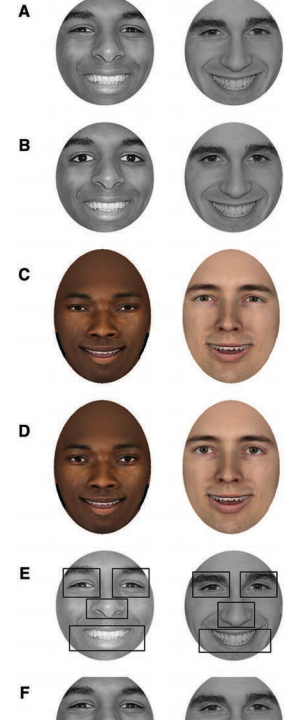Study: Race may bias how you perceive people’s smiles
Whites and non-blacks struggle to distinguish between true and false smiles on black faces
TORONTO, Jan. 8, 2019 – Race can impact how we read emotions on other people’s faces and a reluctance to make eye contact can be a key mechanism in this process, according to new research from York University’s Faculty of Health.
The research, published by the American Psychological Association in the Journal of Personality and Social Psychology® this week, looked at biases in identifying emotions on white and black faces. According to the study, conducted by Psychology Professor Kerry Kawakami in York University’s Faculty of Health and her former postdoctoral student, Justin Friesen, now an assistant professor of psychology at the University of Winnipeg, white and non-black participants have greater difficulty in distinguishing between true and false smiles on black compared to white faces.
“Being able to accurately read someone’s emotions is important for interpersonal interactions. Especially in an interracial context, this could be crucial to how well we get along with others,” says Kawakami. “If you can’t distinguish between different emotions such as happiness, fear and anger, that has huge consequences.”
While previous research has shown that white participants in the United States tend to perceive black faces as angrier than comparable white faces, the goal of their project was to determine if similar biases in recognizing emotions occur for more positive emotions, such as happiness. Kawakami and her team conducted a series of six experiments with more than 425 participants. Although some experiments had all white participants, other studies involved black and non-black participants. In all experiments, participants were shown white and black faces and were asked to rate the level of happiness on each face. While some faces depicted genuine or true smiles, other faces depicted false smiles, also known as polite smiles.
In all of the experiments, white and non-black participants had a harder time differentiating between true and false smiles on black than white faces.
Notably, black participants showed no differences in their ability to identify true and false smiles based on the race of the face.
The researchers proposed that because white and non-black participants pay more attention to the eyes of white compared to black faces, they are better able to identify emotions on white faces. An experiment tracking eye movements supported this theory. Specifically, they found that white and non-black participants spent longer looking at the eyes of white compared to black faces and that this difference predicted biases in identifying emotions. When participants were only presented with the eyes of black and white faces in an additional experiment, and therefore were obliged to look at the eyes of black faces, racial biases were decreased and participants easily distinguished between real and false smiles on black faces.

Research was published in the Journal of Personality and Social Psychology® January 2018
The difference between expressions related to true and false smiles is all related to the eyes, Kawakami says, so identifying these emotions and other emotions may actually depend on a willingness to look into the eyes of black faces.
“If people aren’t looking at your eyes and can’t read your emotions, how can they know whether you like their company or not? Or when you’re in a job interview or interacting with police, how do they respond if they can’t accurately gauge your expression to know how you are feeling? In a lot of different contexts, reading a person’s emotions is key to being able to react appropriately.”
The researchers suggest that given that intergroup interactions are often fraught with misunderstandings, these findings provide clues to better understand how these processes unfold and may also inform the development of meaningful strategies to improve group relations.
This research is part of a larger project on intergroup biases in face perception described in a recent chapter co-authored by Kawakami, which was awarded the American Psychological Association’s 2018 Gordon Allport Award for best article on Intergroup Relations.
York University champions new ways of thinking that drive teaching and research excellence. Our students receive the education they need to create big ideas that make an impact on the world. Meaningful and sometimes unexpected careers result from cross-disciplinary programming, innovative course design and diverse experiential learning opportunities. York students and graduates push limits, achieve goals and find solutions to the world’s most pressing social challenges, empowered by a strong community that opens minds. York U is an internationally recognized research university – our 11 faculties and 25 research centres have partnerships with 200+ leading universities worldwide. Located in Toronto, York is the third largest university in Canada, with a strong community of 53,000 students, 7,000 faculty and administrative staff, and more than 300,000 alumni.
York U's fully bilingual Glendon Campus is home to Southern Ontario's Centre of Excellence for French Language and Bilingual Postsecondary Education.
Media Contact:
Anjum Nayyar, York University Media Relations, 416-736-2100 ext. 44543, anayyar@yorku.ca






